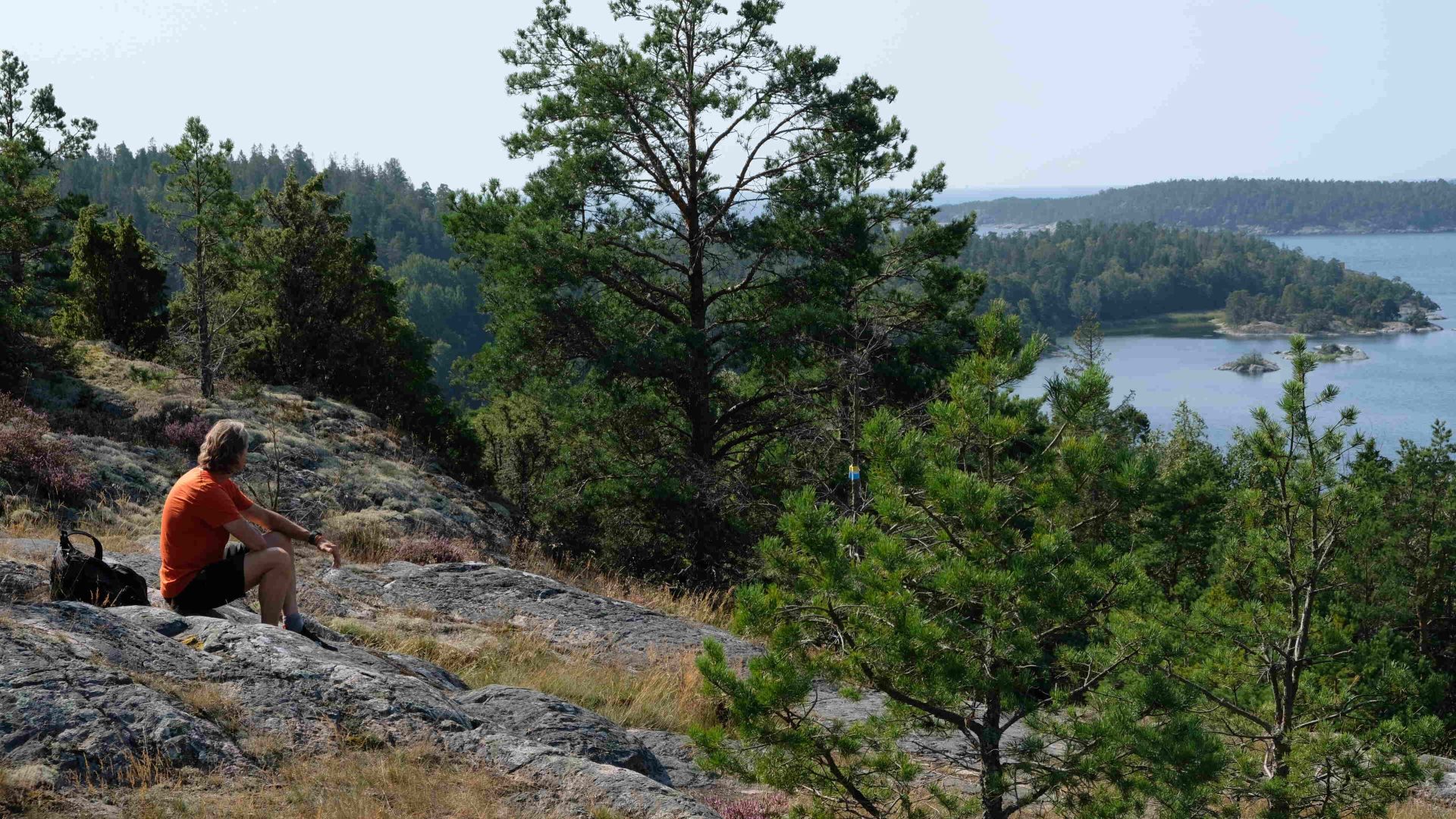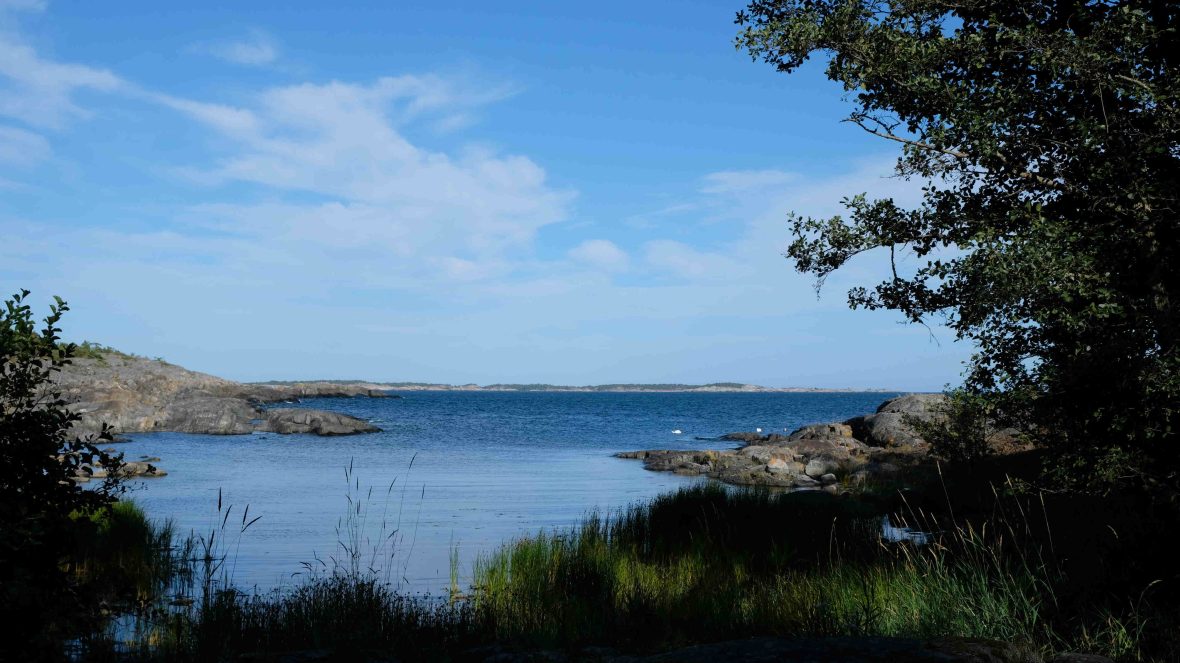
More than a hike: A brand-new hiking trail spanning the Stockholm Archipelago is the first of its kind, and aims to make life more sustainable for the island residents.


More than a hike: A brand-new hiking trail spanning the Stockholm Archipelago is the first of its kind, and aims to make life more sustainable for the island residents.
All across Sweden, residents and visitors alike have broad, sweeping access to the nation’s land and water. Thanks to Allemansrätten which translates to ‘every man’s right’ and more commonly referred to as the Right to Roam, people can hike, camp, swim, and paddle pretty much wherever they like (with some exceptions). But all of that open space can sometimes be baffling for visitors. In the absence of waymarked, formally maintained trails, where do you go?
The Stockholm Archipelago Trail, a brand-new long-distance hiking trail spanning 21 islands off the coast of the Scandinavian capital, is the latest answer to this question. But beyond the stunning views and improved hiker infrastructure I experienced recently on a tour of the new trail, the project is also a clever, strategic solution for something much bigger. Its creators hope the very existence of the trail will make life far more sustainable throughout the archipelago.
If that sounds like a stretch, consider this: There are 30,000 islands in the Stockholm Archipelago, and about 1,000 of them have at least some seasonal residents. Of those, about 150 have year-round residents. And for those people, life can be tricky outside of the summer tourist season, when there are additional services to accommodate visitors. The height of tourist season only lasts about three or four weeks here, according to Marie Östblom, a project manager for Stockholm Business Region.

Before I visited the islands myself, this was hard to believe. Some of the islands on the trail are a public ferry ride from the center of Stockholm, and others are just 30 minutes off shore from the city’s suburbs. As southern Europe gets hotter, more travelers are heading to cooler destinations in northern Europe and Scandinavia to beat the summer heat. Surely everywhere within striking distance of Stockholm would be bustling, I thought.
But I was surprised. In mid-August, I visited the islands of Utö, Sandhamn, Ålö, and Nåttarö, and saw almost no visitors who weren’t part of my group. It was idyllic: The days were long enough to swim before breakfast and hike well into the evening, but not so long that we were deprived of starry skies. The weather was warm but not hot. The sea was fresh but not unreasonably cold (depending on your cold tolerance, of course). And yet tourist season was over—there were no crowds to battle.
Building hiking trails also has the benefit of being a low-impact tourism mechanism that actively helps to protect fragile ecosystems by making it easier for visitors to stick to clear trails. “My goal is to have the trail as a kick-off to attract the right kind of people, who love nature all around the world and share common interests,” Östblom tells me.
Most visitors here are Swedes traveling in conjunction with school vacation schedules, Östblom told me. And when the guests pack up and go home, so do the ferries connecting the islands. In the off-season, you generally have to travel out to the mainland to catch a ferry to a neighboring island if you don’t have your own boat.
The trail’s creators include Östblom and trail designer Michael Lemmel, who also co-founded Ötillö Swimrun endurance races. Lemmel and Östblom say they hope the arrival of hikers will drive innovation that ultimately improves life for islanders and makes the tourist season more sustainable.
“The purpose is to make it possible for people to live in remote areas, and create possibilities for them to subside,” Lemmel told me as we hiked the Sandhamn section of the trail together. “Meaning that businesses like the Sandhamn Seglarhotell [a B&B] have clients for longer periods during the year. And that micro transport [opportunities] grow, and that restaurants can keep open for longer, and so on.”
If an island-to-island hiking trail becomes popular, it would make good business sense to expand ferry offerings, or even to create new ‘micro’ transit companies, Lemmel says. Think Uber, but for boats. And while this would be good for hikers, it would be great for residents, for whom life would become much easier almost overnight.
Currently, many residents on the islands have to literally ship their kids elsewhere for school, sending them by boat to schools on bigger islands or the mainland. But with better transit connections, life in the islands would become more sustainable long-term. It could attract new residents, create new business opportunities, make it easier for young adults to stay in their communities rather than leaving, and so on.
In short, the hope is that this trail will nourish the Archipelago and keep it alive.
The trail’s design and construction was funded by a EUR600,000 (USD$670,000) grant from the European Union, and delivered by a Swedish economic growth agency that’s currently working to build new trails like this throughout the country. The goal is to create new ‘lowland’ trails outside the mountain regions—which already have plenty of visitors—to attract visitors whose tourism dollars can invigorate local communities.
Building hiking trails also has the benefit of being a low-impact tourism mechanism that actively helps to protect fragile ecosystems by making it easier for visitors to stick to clear trails. “My goal is to have the trail as a kick-off to attract the right kind of people, who love nature all around the world and share common interests,” Östblom tells me.
She and her team are currently working on building packages with tour companies to make it easier for hikers to plan trips on the trail. Such a package would include ferry tickets, nights in accommodations on the islands, and a plan for when and how to get to each island. It would take most people about three weeks to hike the full trail, including island-to-island transfers. However, you could hike as much or as little of it as you like, as frequent ferry departures directly from the city of Stockholm make it easy to access quite a few sections with just one boat ride.
Every section of the trail has accommodation options in a mix of hotels and B&Bs, like the Seglarhotell and Utö Vardshus, plus vacation rentals, hostels, and managed campsites. It’s also possible to backpack the whole trail and camp for free in the woods or on the beaches, thanks to Sweden’s right to roam.
As for what to expect? The trail is surprisingly diverse, especially for a string of relatively tiny islands in close proximity. Some islands are almost completely wild, with no year-round residents, while others, like Sandhamn, have small towns or villages. In the span of just a few miles, you can transition from soft, sandy beaches to rocky, technical trails, to enchanting forests where the trail is made of such soft moss, it feels like walking on a mattress.
Many of the islands are home to foxes, deer, and moose—the latter of which are surprisingly good swimmers, so steer clear. In late summer, you can easily find silence and an abundance of fresh, ripe blueberries and lingonberries in the forests.
The topography of the archipelago is such that the Baltic Sea holds warmth longer here than off the shores of the mainland, which in turn offers milder weather deep into autumn. This stretch between August and October is known as “magic season” in the archipelago, when the days are still long and warm, the sea is comfortably swimmable, and nearly all the tourists have gone home.
It’s ideal for hikers and backpackers seeking some peace and quiet. And when the light shines just right through the pine trees, setting the moss and lichen aglow in sheens of amber, calling it “magical” feels like an understatement.
***
Adventure.com strives to be a low-emissions travel publication. We are powered by, but editorially independent of, Intrepid Travel, the world’s largest travel B Corp, who help ensure Adventure.com maintains high standards of sustainability in our work and activities. You can visit our sustainability page or read our Contributor Impact Guidelines for more information.

Kassondra Cloos is a travel journalist from Rhode Island living in London, and Adventure.com's news and gear writer. Her work focuses on slow travel, urban outdoor spaces and human-powered adventure. She has written about kayaking across Scotland, dog sledding in Sweden and road tripping around Mexico. Her latest work appears in The Guardian, Backpacker and Outside, and she is currently section-hiking the 2,795-mile England Coast Path.




Can't find what you're looking for? Try using these tags: